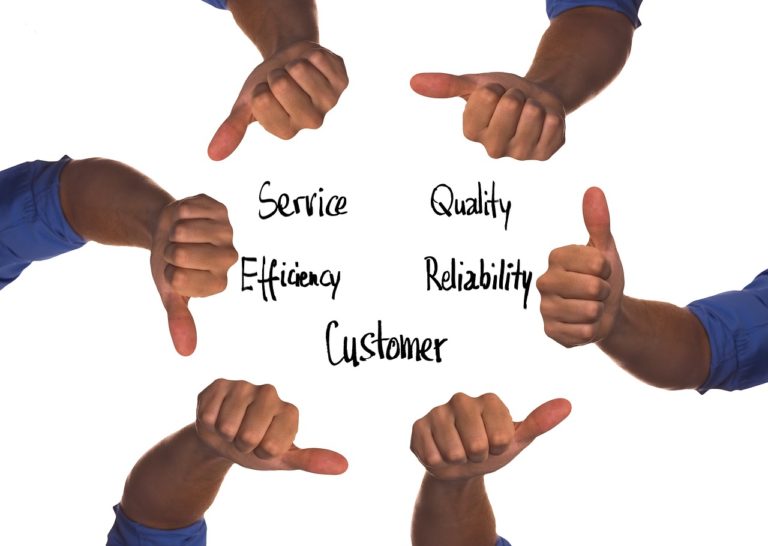[vc_row][vc_column][vc_column_text]
Claiming to be “consumer-centric” is simple; executing it effectively requires a fundamental shift in leadership and company culture.
Many leaders believe they prioritise consumers, yet their strategies often miss the mark due to a lack of meaningful integration.
Building a genuinely consumer-first culture means driving every decision, process, and strategy with the consumer’s needs and values at the forefront.
This guide equips leaders with the insights and actionable strategies to foster a winning consumer-first culture. Rather than relying on superficial gestures, leaders can inspire a transformation that elevates the organisation, engages employees, and creates powerful, lasting consumer relationships.
If you prefer to listen rather than read, click below.
1. Define Consumer-Centricity from the Top Down
A leader must set a clear and aligned definition of consumer-centricity. Many companies define consumer centricity as “putting the consumer at the centre,” yet this often stays as a slogan without actionable meaning. To ensure alignment across the organisation, start by answering these essential questions:
- What does “consumer-first” mean to us as an organisation?
- How do our consumers define a positive experience, and how does that align with our approach?
Encouraging leaders to establish and communicate this definition creates a foundation for a company-wide culture that actively listens and adapts to consumer feedback.
One of the best ways to do this is to adapt their vision and mission statements to specifically mention the consumer and how the company benefits them by providing solutions to their wants and needs.
Read more about how to adapt your own company’s mission in “The Essential Customer-Centric Mission Statement for Achieving Success.”
Leadership Example: Lego’s CEO exemplifies consumer-centric leadership by implementing programs like Lego Ideas, where consumers can directly contribute to product ideas. Lego sustains relevance and loyalty by embedding consumer voices into its product strategy, proving how consumer-centric thinking can drive long-term success. Source: Forbes.
2. Build Trust through Leadership Integrity and Transparency
In a world where consumers have endless choices, trust is invaluable. For leaders, this means instilling transparency and accountability at every level. Research from Edelman’s 2023 Trust Barometer shows that 88% of consumers expect businesses to lead with integrity, especially during uncertain times. Source: Edelman.
Leaders can build trust by:
- Demonstrating honesty and follow-through in consumer communications.
- Publicly stating and reinforcing company values.
- Ensuring transparent practices, especially in data privacy and product claims.
Leadership Insight: Patagonia’s leadership has consistently been transparent, especially regarding its environmental impact. By acknowledging areas for improvement and committing to sustainability, Patagonia has built one of the most trusted brands globally. Source: Harvard Business Review.
3. Champion Personalized Experiences through Strategic Data Use
Today’s consumers want more than blanket personalisation; they seek experiences that resonate with their unique needs. Leaders can set the tone for truly consumer-first personalisation by emphasising a data-driven approach that moves beyond mere marketing to holistic, meaningful interactions.
Leadership Action: Starbucks’ CEO has driven personalisation efforts through the Starbucks Rewards program, tailoring offers based on individual preferences and purchase history. This strategy has fueled member growth and solidified consumer loyalty. Leaders looking to build personalised experiences should aim to integrate insights across all consumer touchpoints, not just in marketing. Source: Retail Dive.
4. Empower Your Team to Deliver Consumer-Centric Service
Leaders often focus on processes or technology when aiming to improve consumer service. However, the fundamental transformation lies in empowering teams to go above and beyond for consumers. Research from PwC shows that 96% of consumers believe excellent consumer service builds trust. Source: PwC.
Case Study: Zappos has revolutionised consumer service by encouraging team members to make decisions that support consumer satisfaction—even if it means spending hours on the phone with a single consumer. This freedom to prioritise consumer satisfaction over time constraints or scripts has fostered an incredibly loyal consumer base. Leaders should consider revisiting policies to enable teams to make consumer-centered decisions. Source: Zappos.
5. Cultivate a Loyalty Program that Resonates with Today’s Consumers
Loyalty programs should reward and recognise consumer as unique individuals, not just anonymous members. Leaders are crucial in ensuring loyalty initiatives reflect a consumer-first approach and provide rewards that consumer genuinely value.
Case Study: Sephora’s Beauty Insider program, supported by leadership, tailors rewards to individual spending tiers and preferences, delivering exclusive access to products and early releases. This consumer-first loyalty program fosters deep consumer connections and distinguishes the brand in a crowded market. Source: Sephora.
As a leader, consider implementing or updating loyalty programs to create authentic, personalised rewards that go beyond traditional points systems and build long-term loyalty.
6. Embrace Direct-to-Consumer (DTC) Engagement to Create Close Connections
Direct-to-consumer models are invaluable for leaders to foster close consumer relationships and gather critical insights without intermediaries. The DTC approach enables companies to personalise offerings, build consumer loyalty, and capture valuable feedback directly.
Example of Leadership Excellence: Nike’s leadership has adopted a DTC approach that offers exclusive products, early releases, and personalised recommendations through its mobile app. This strategy has strengthened Nike’s direct relationship with its consumers, reinforcing brand loyalty while collecting essential insights for future engagement. Source: Harvard Business Review.
Conclusion: Leadership and a Consumer-First Culture
Consumer centricity starts at the top.
Leaders who dedicate themselves to building a consumer-first culture can inspire teams, drive impactful changes, and create organisations that consumer love and trust.
By prioritising empathy, transparency, and empowerment, leaders set the stage for a culture that satisfies consumers and wins their loyalty.
Ready to Make the Shift?
At C3Centricity, we specialise in helping leadership cultivate a truly consumer-first culture.
Through our proprietary QC2 (Quantum Consumer Centricity) system, we provide leaders with the tools to assess and refine their consumer strategy by evaluating critical pillars such as company alignment, consumer needs, brand purpose, and operational processes.
You can begin by taking our QC2 Evaluator tool to see where your consumer strategy stands and identify actionable steps to foster a winning culture.
Click here to access the free QC2 Evaluator tool to help you assess your business and lead your organisation toward true consumer centricity.[/vc_column_text][/vc_column][/vc_row][vc_row css=”.vc_custom_1755658050334{padding-top: 5px !important;padding-right: 5px !important;padding-bottom: 35px !important;padding-left: 5px !important;background-color: #F2F2F2 !important;}”][vc_column width=”1/2″][vc_custom_heading text=”Customer-First challenges” font_container=”tag:h3|text_align:left|color:%231E73BE” use_theme_fonts=”yes” css=”” link=”url:https%3A%2F%2Fc3centricity.com%2Fcustomer-first-strategy-challenges%2F”][/vc_column][vc_column width=”1/2″][vc_custom_heading text=”Mission statement” font_container=”tag:h3|text_align:right|color:%231E73BE” use_theme_fonts=”yes” css=”” link=”url:https%3A%2F%2Fc3centricity.com%2Ftag%2Fcustomer-centric-mission-statement-examples%2F”][/vc_column][/vc_row]







